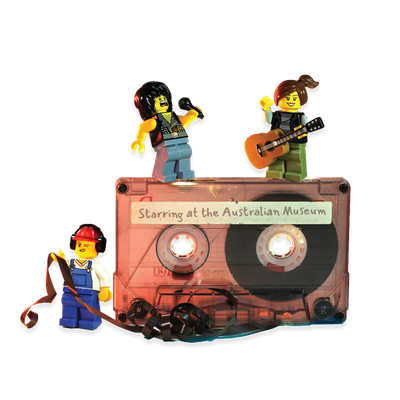Your search returned 2814 results
By Page Type
By Tag
- fish (966)
- blog (698)
- fishes of sydney harbour (400)
- First Nations (293)
- Blog (236)
- AMRI (169)
- archives (165)
- Aboriginal and Torres Strait Islander (135)
- Eureka Prizes (131)
- insect (126)
- Ichthyology (125)
- geoscience (109)
- minerals (102)
- climate change (98)
- podcast (94)
- Fish (91)
- Anthropology (89)
- International collections (80)
- Minerals Gallery (78)
- wildlife of sydney (78)
- Labridae (77)
- frog (73)
- gemstone (70)
- history (63)
- photography (63)
- staff (61)
- Mollusca (60)
- gem (59)
- Birds (58)
- education (57)
- Gems (56)
- Indonesia (56)
- AMplify (54)
- shark (54)
- people (53)
- exhibition (52)
- earth sciences (50)
- past exhibitions (50)
- Gobiidae (48)
- Pomacentridae (45)
- sustainability (45)
- Serranidae (44)
- science (43)
- lifelong learning (42)
- Earth and Environmental Science (41)
- Syngnathidae (41)
- Ancient Egypt (40)
- Bali (40)
- bird (40)
- dangerous australians (40)
-
Conservation Status - what does it mean?
https://australian.museum/learn/animals/conservation-status-what-does-it-mean/The conservation status of a species is an indicator of how likely it is to remain alive at present or in the near future.
-
Heathland habitat
https://australian.museum/learn/animals/wildlife-sydney/heathland-habitat/Approximately 8 per cent of the Sydney Basin is heathland.
-
Where do spiders live?
https://australian.museum/learn/species-identification/ask-an-expert/where-do-spiders-live/You can see spiders by day and night in almost every habitat on earth.
-
What is an ecosystem?
https://australian.museum/learn/species-identification/ask-an-expert/what-is-an-ecosystem/Ecosystems are the foundations of the Biosphere and they determine the health of the entire Earth system.
-
What is a mammal?
https://australian.museum/learn/species-identification/ask-an-expert/what-is-a-mammal/Mammals are a diverse group of animals that are found below and on the ground, in trees and oceans.
-
What bird is that?
https://australian.museum/learn/species-identification/ask-an-expert/what-bird-is-that/The total number of species of birds on earth is estimated to be around 10,000!
-
What is an invertebrate?
https://australian.museum/learn/species-identification/ask-an-expert/what-is-an-invertebrate/The short answer is that Invertebrates are animals without a backbone.
-
The influence of science on the human story
https://australian.museum/learn/science/human-evolution/the-influence-of-science-on-the-human-story/Discover a timeline of scientific discoveries and theories that build on the works and ideas of others: nothing happens in isolation!
-
Find out more
Tails from the Coasts
Special exhibition
On now![]()
-
Find out more
Burra
Permanent kids learning space
10am - 4.30pm![]()
-
Discover more
RELICS
Special Exhibition
Opens 16 August 2025![]()
-
Discover more
Minerals
Permanent exhibition
Open daily![]()





